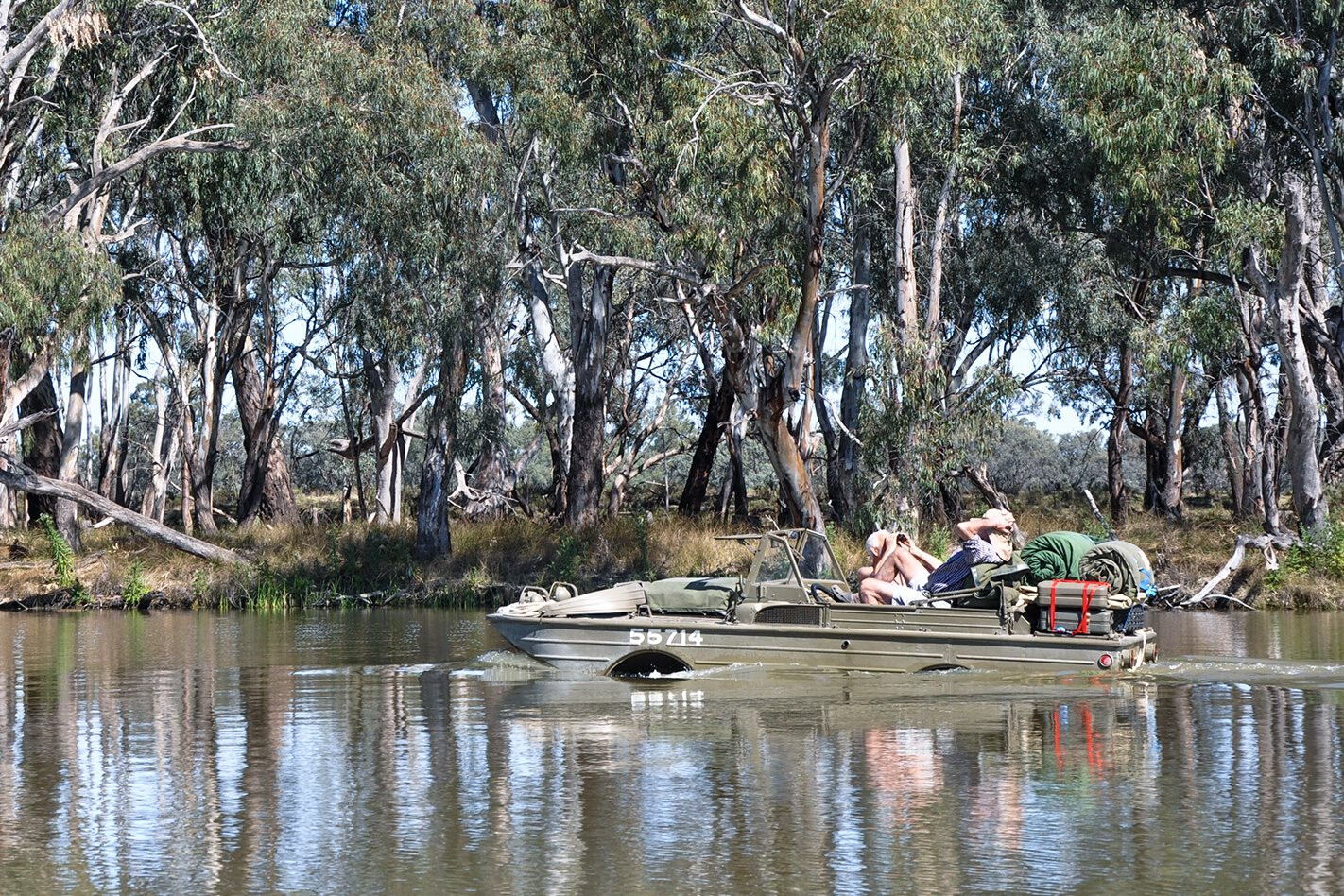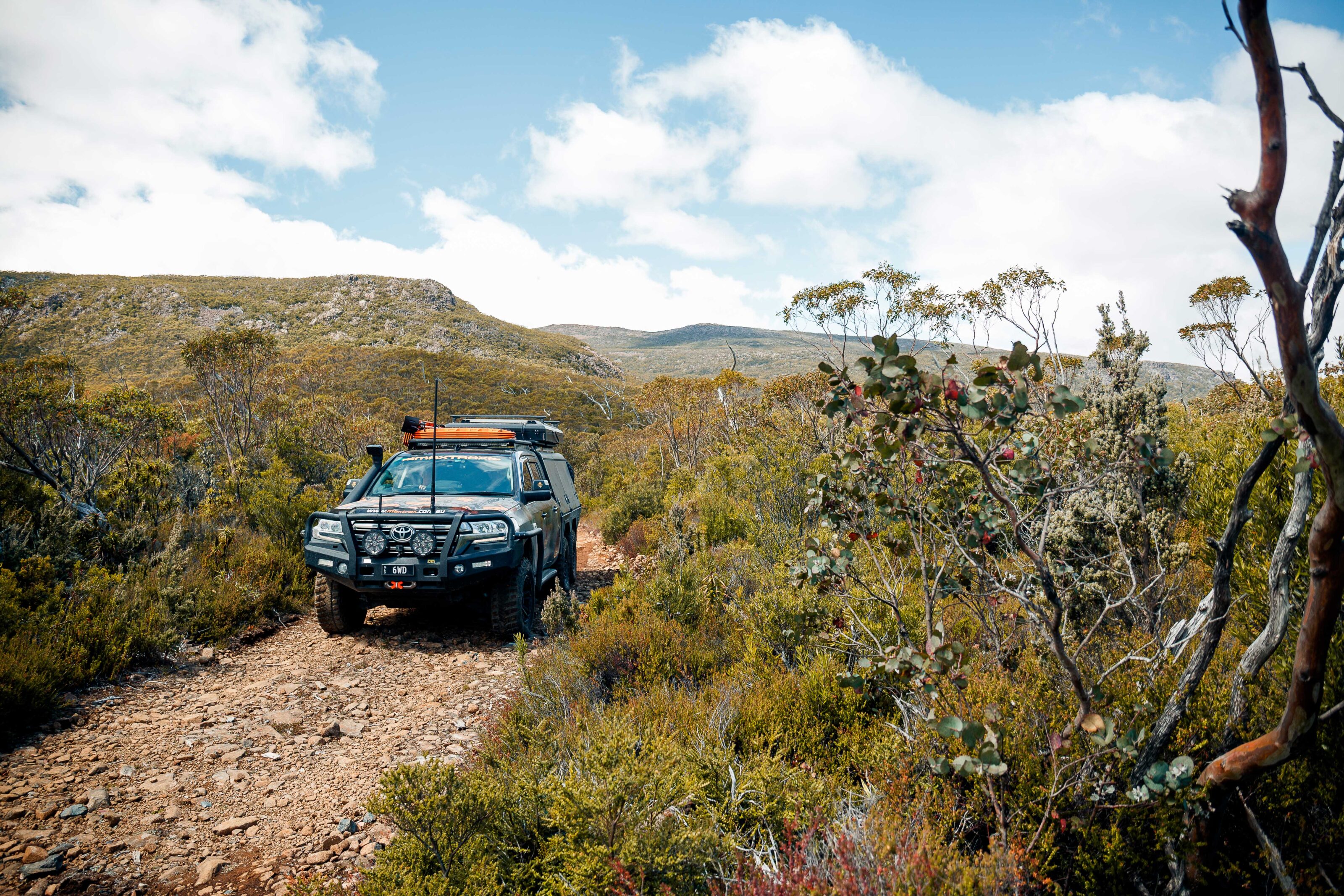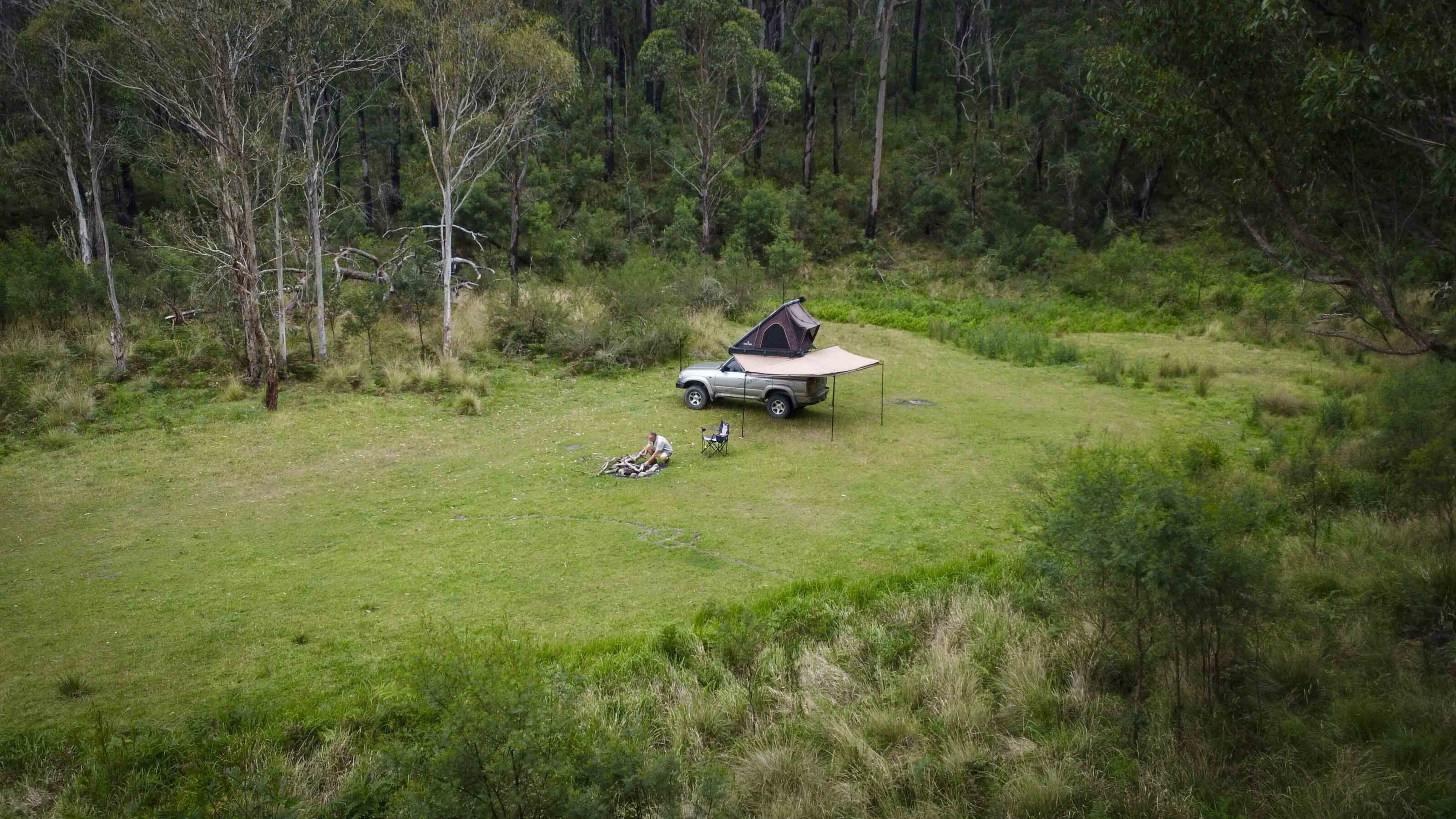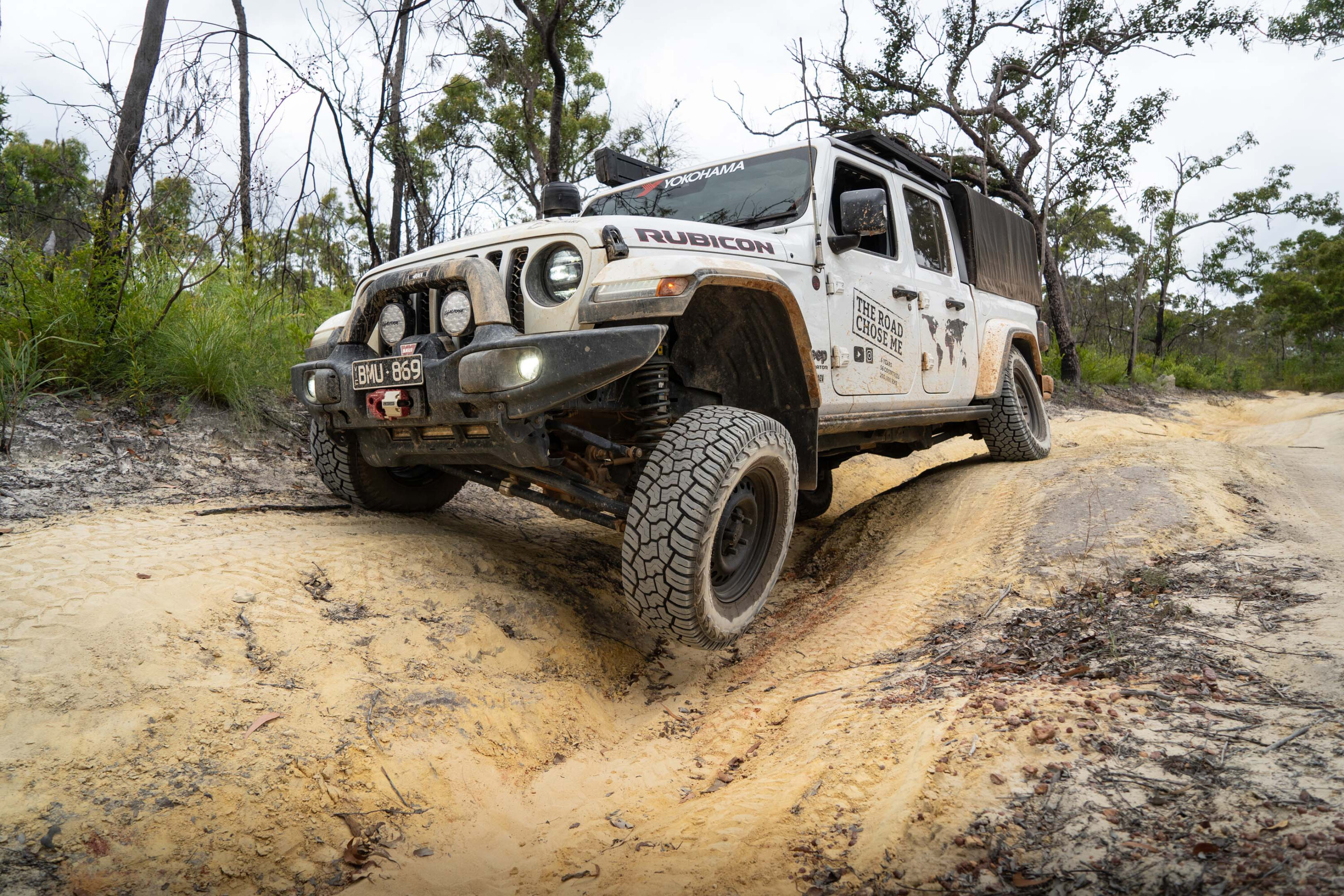How cool are these? Produced in Ford’s River Rouge factory in Michigan, USA, the GPA is basically an amphibious version of the World War II Willys MB, or Ford GPW Jeep.
It has the same engine and running gear, but with 12-volt electrics for the radio equipment (needed for wartime use). It also has a marine propeller driven through the gearbox, a power take off-driven Capstan winch on the front deck, a rudder and a very efficient bilge pump.
More than 12,700 of these vehicles were built in just eight months during 1942 to 1943. Around 150 officially arrived in Australia during the war years, of which only about 20 remain, and like many other weird and wonderful cars and 4x4s, there’s a handful of blokes who love ’em! These blokes disregard any cries about rarity and value, to regularly take on a real adventure in the remaining vehicles: cruising the Murray River. They reckon, out of the 20-odd vehicles, only 13 are known to take a short swim, let alone several long days in the water!
This small but dedicated crew has now enjoyed six similar trips, covering about 1540km of the 2226km of navigable water in Australia’s longest river. That feat has been undertaken over eight years and I was lucky enough to be invited on what may be the last trip.
Of the sections that have not been covered, most were avoided because of fluctuating water levels and hazards in shallow water. The hazards include rocks, mud, sandbars and snags, which are often the submerged remains of huge river red gum trees. These fall in to the river when flood waters cause erosion on the river banks.
At the start, our trip involved four GPAs and seven crew members. By the time we completed the trip’s first stage, two vehicles had developed engine problems and their owners had unfortunately opted out. One continually stopped because of fuel vaporisation not uncommon in World War II land Jeeps, particularly in heavy-going such as climbing steep hills in low-range on warm summer days.
This vehicle didn’t have an additional heat exchanger device fitted to it like the others did. Meanwhile, the other vehicle that dropped out had developed a valve issue – most likely a burnt exhaust valve on the number-two cylinder, or possibly it was a broken valve spring, as the compression test undertaken was not too alarming.
The GPAs were all modified in some way to improve the original Sparkman & Stephens’ design and to make them more suitable for long trips on the river. The important mods were pressurised axles to stop water entry through the hub seals, the (aforementioned) additional heat exchangers to better cool the enclosed motor and transmissions at the low river speeds, and an extra electric bilge pump to quickly remove excess water passing seals of those parts that run outside the hull (steering drag link and drive shafts).
The Murray River has a system of kilometre-marker signs nailed to trees about every 2km. The first part of our trip started at 1228 at a place called Boundary Bend and finished at 1118, Lock 15, near the town of Robinvale. That was three-and-a-half days of adventure!
After testing one engine for a possible problem, we started the next part of our journey on a short road and track of about 80km. This took us through the Hattah-Kulkyne National Park, bypassing a particularly bad section of the river with low water levels.
The two remaining GPAs re-entered the river at marker 986 on Watts Bend, Colignan, and then finished near 832 at the junction of Australia’s second longest river, the Darling River, at the town of Wentworth. We’d travelled for five-and-a-half days, at a steady 8-10km/h on the river. Accommodation? Like most 4×4 owners, we mostly camped!
As mentioned, the main problems for a GPA when navigating the coffee-coloured river were hidden hazards in shallow water – mostly sandbars and mud, but also occasionally rocks and sunken logs. These hazards were particularly prevalent at the water’s edge, which made it difficult at times to find exits for morning tea, lunch or at day’s end.
We did have a number of concrete launching ramps to use at times, but in a lot of places none were available. So it was common to send one vehicle in to test the suitability of the exit. If it failed, we’d extract it then try somewhere else.
Things didn’t always go to plan and on one occasion a vehicle became so bogged – after hitting a hidden mud bar close to shore – that both remaining vehicles were left bogged on the foreshore. The second of the bogged vehicles, however, had been deliberately aimed at a tree so it could be winched out of the Murray. This allowed it to use terra firma to snatch-tow the other vehicle out of its predicament.
On other occasions, however, trees were not close enough and we had to use the second GPA as a winch anchor to recover the bogged vehicle. Plenty of improv and luck was needed, and fewer visits by Murphy and his law were always appreciated.
There’s always memorable schemozzle during a 4×4 trek – especially if the trek is ‘driving’ along a river! One of these situations occurred when one of the vehicles was travelling a little to the left of centre and hit a mud bank. Through its momentum it rolled over the bank, dropping into water not deep enough to allow it to float, but also not shallow enough to allow it to gain traction. Effectively, it was bogged in the middle of the river.
I was driving the second vehicle at the time and returned to the bogged one to attempt a recovery by tow rope. But the rope became tangled in the propeller as I manoeuvred the vehicle in the water, trying to get close enough to the stranded vehicle without also becoming bogged.
With the prop useless, I drifted downstream until I got close enough to the shore to jump overboard with another rope. I swam and clambered ashore to tie the rope to a suitable red gum stump. Then I hauled the vehicle to a point where I could get underneath it with a knifeto cut the rope jamming the propeller. Once the propeller was turning again, I was able to get the vehicle farther downstream.
From here I had one chance to get it ashore to finish removing the remaining rope from around the shaft and rudder underneath. I then returned to the water, re-engaged the propeller, and cruised upstream to the stricken GPA (it was about an hour later by now, mind you).
Fortunately, I got another rope to the bogged vehicle and we dragged it out of its now enlarged hole. Manhandling 1500kg of boat-hulled Jeep is not the same as fishing out a tinnie, believe me. A beer, or three, was definitely earned that day!
Our journey covered some remote areas away from roads and tracks, with only the river wildlife to keep us company. At other times in more accessible areas we passed fisherman and campers and amused them and their children by exiting onto sandbars.
We also cruised through some built-up areas with all the trappings of civilisation. Conveniently, these areas also had formed exit/entry points and there was even a marina at Mildura where we could stop, tie up outside a cafe and enjoy a cappuccino!
All in all, like most ‘off-road’ treks, it was an excellent experience with good blokes who have laughed about these and many other predicaments during their eight years of travel.





